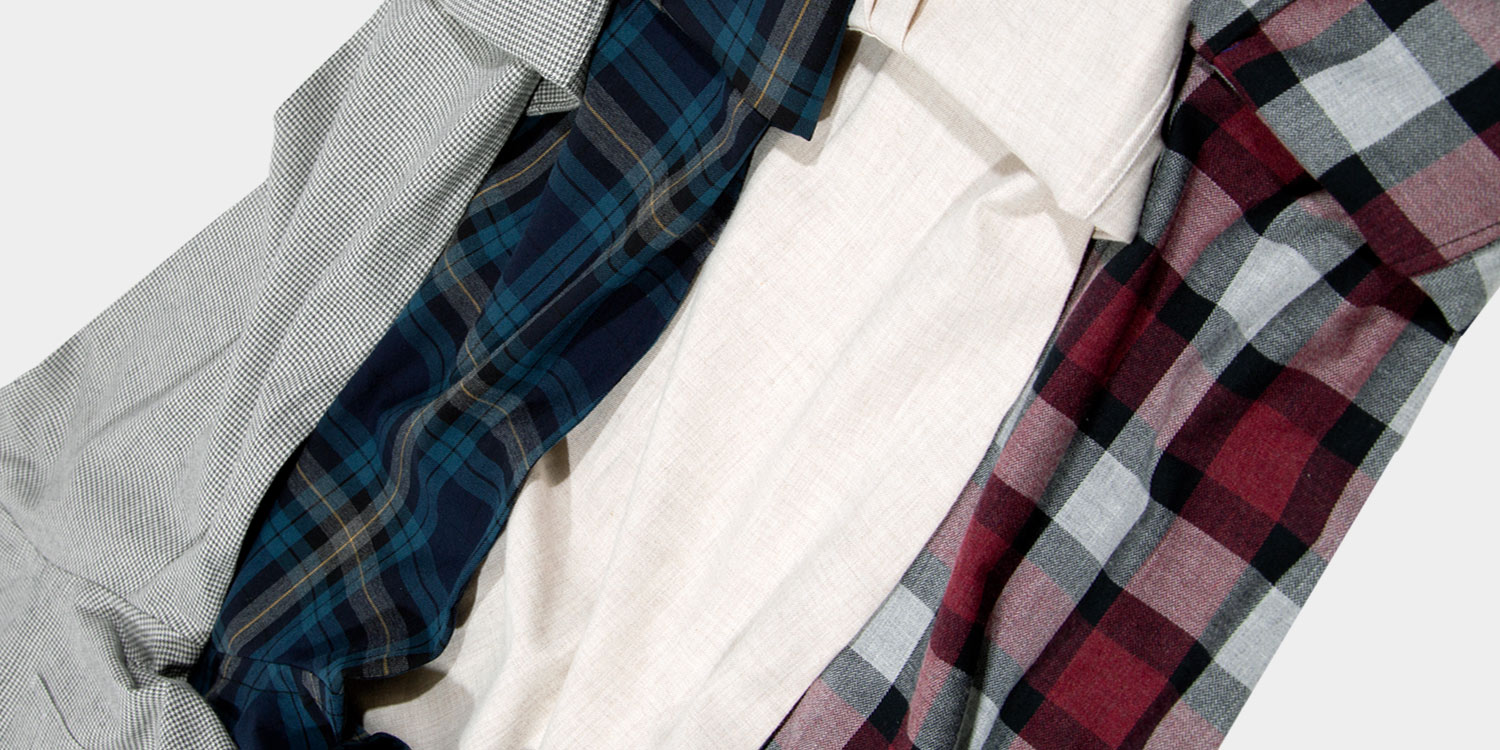The Complete Guide to Cotton Shirt Fabrics
Cotton may be the default shirting fabric, but that doesn’t mean all cotton is the same. From oxford cloth to chambray to end-on-end, there’s a dizzying array of distinct weaves to choose from. To address any possible cotton confusion, we’ve broken down eight of the most distinctive weaves below, along with notes on when and how to wear them.
Twill
Twill might be the most common “dress” cotton. It’s woven with a set of parallel “ribs,” which makes it a tighter, finer weave that has a slight sheen. It’s a great choice for spread collar shirts, particularly if you intend to wear them with a suit and tie.
Oxford
Oxford cloth is made with a basket weave that’s more open than twill, making oxford cloth shirts more breathable and less prone to wrinkling. Because oxford cloth is hard-wearing and has a matte finish, it’s most often used in casual shirting, particularly with a button-down collar. It can certainly be worn with suits and jackets, but is great for everyday wear with chinos and jeans.
Royal Oxford
A kind of bridge between twill and oxford, royal oxfords feature a basket weave that is greater in scale and possesses a slight sheen. This makes it an excellent dress shirt fabric, as it’s a little more lustrous than oxford cloth but even less likely to wrinkle.
Poplin
Poplin is a plain weave featuring crosswise ribs that give it a slight texture. It’s finer and typically lighter in weight than oxford cloth, making it a great alternative for the spring and summer months, though it can be worn year-round as a dress or casual shirt.
Broadcloth
As another plain weave, broadcloth is a cousin of poplin but has a wider weave that makes it denser and finer. It leans just a bit dressier than poplin, though it remains versatile enough for patterned button-downs or solid spread collar shirts.
End-on-End
End-on-End also falls into the plain weave camp, but is distinguished by its use of parallel light and dark threads, which gives this closely woven fabric a heathered effect. The light, tight weave suits it to warmer weather, and the heathering makes it a touch more casual than broadcloth.
Chambray
Similar to an end-on-end, chambray fabric is a plain weave woven from threads of alternating color. But in chambray’s case, one of those colors will always be white, while the other is colored. This makes the heathered effect more noticeable, and the fabric more casual. It’s best used for button-down or spread collar shirts that will be worn casually. We’re particular fans of adding two pockets to the chest of a chambray shirt to give it a vintage workwear look.
Flannel
Flannel—a term associated with wool as well as cotton—is a fabric that has been “brushed” with fine metal combs to uplift some of its yarn, creating a fuzzy nap that gives it a soft, raised texture. The raised nap also works to trap heat, making it an excellent choice in the fall and winter months. In the case of shirting, flannel is often associated with tartan patterns.














